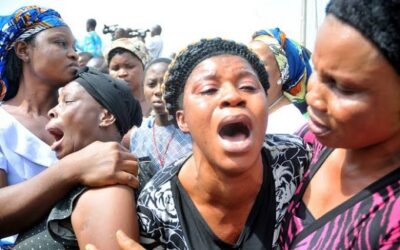— The role of Regional Powers, the United Nations and the ICC
By ‘Gbenga Adenuga, London Metropolitan University, Faculty of Law, Governance and International Relations
1. Introduction
This paper provides a historical background to the conflict in the African region ‘Darfur’; the conflict has become one of the worst humanitarian disasters in Africa and the World in general. It will also examine the roots and causes of the crisis, but the focus-point is the role of the regional powers, the African Union and the United Nations. As a result, the impact of the conflict on Children and women, and the implication of the war on neighbouring countries will also be examined in full details.
Secondly, in order to achieve the aims and objective of this research, it is equally important to explore concisely the failure of International Criminal Court to prosecute the major culprit and other wrongdoers in the conflict. Also in question is how the war was classified ‘Genocide.’ Therefore, the paper will investigate the present day Darfur and the way forward; thus, it will be concluded that major reforms are needed to restore peace and harmony in the African region – Darfur. But before that and because this study is primarily on ‘Conflict and regulations’, it is equally significant to briefly look at the international definition of the word ‘Conflict’.
2. Definition of Conflict
A simple definition of the word ‘conflict’ as defined by Collins Concise English Dictionary (2006) is associated with fight, battle, or struggle, especially a prolonged struggle; strife, controversy, quarrels; tantamount to conflicts between parties. Conflict can also be defined as discord of action, feeling, or effect, antagonism or opposition, as of interests or a principle which is associated with a conflict of ideas.
However, ‘Realists and Functionalists’ assumed that conflict is functional to all societies and therefore necessary. Society must create healthy conflicts (or competition) to catalyse growth and development. Governments, therefore, are not bothered about conflict once it is within controllable boundaries. Even violent conflicts do not inspire intervention from the state unless they threaten the “perceived” power or legitimacy of the state. States assume that their existence depends almost entirely on their capacity to unleash violence on any perceived or real threat. According to United Nations conflicts analysis training documents of 2010; (www.unpan1.un.org/intradoc)
“Basic human needs are non-negotiable and indispensable. Deprivation of needs is one source of conflict. Needs are physical, material or social i.e. belonging to a group or the need to interact. They are political when being part of the decision-making process will affect one’s existence. Resources available to satisfy needs and wants are perceived to be scarce. Groups therefore scramble for these scarce resources; thus, conflict persists”.
3. Historical background of Darfur (Sudan)
The good work of Gerard Prunier (Darfur: The Ambiguous Genocide: 2005); a key source for this case study proves very valuable in citing the historical setting of Darfur. Darfur is a region located in the westernmost part of present-day Sudan. According to Prunier; “…The name ‘Sudan’ is itself an ambiguous appellation derived from the Arab geographers’ name Bilad as-Sudan” (meaning land of the Blacks). At some point during the colonial era, there were two Sudans’ namely: the French Sudan, which is the present day Mali, and the Anglo-Egyptian Sudan. It is understood that they stood at the opposite ends of a cultural land-mark, stretching from Northern Nigeria to Kodofan. Pruniers’ work reveals that:
“Darfur, located near the middle of the continuum, is perhaps more closely related to the Central Sahel and Northern Nigeria than it is to the Nile Valley. It displays a strong geographical and historical coherence which stands in market contrast to its varied and contradictory ethnic makeup. Darfur is big, with a surface of nearly half a million square kilometres (150,000 square miles) and it is generally dry without being desert.
It was long an independent sultanate (from approximately the fourteenth century till 1916); it later becomes a province of Anglo-Egyptian Condominium (1898-1956) and then a state of the Republic of the Sudan on its independence. It was granted the independence status in 1956 by the United Kingdom”. (Prunier: 2005, pp2-3)
Independence and previous conflicts
According to the 2006 article of (UNIC Khartoum) the United Nations Information Centre (Khartoum), titled: History of Sudan – It is very obvious that the Sudanese are not strangers to war or conflict; they suffered seventeen years of civil unrest from 1955-1972 (the first Sudanese civil war). Also in 1983 (the second Sudanese civil war); the article emphasised that there has always been ethnic, religion and economic unrest between the Northern Sudanese (who were predominantly Muslims) and the Southern Sudanese who have fewer Christian in their mist, but also predominantly Muslims.
Consequently, on “December 19, 1955, the parliament voted unanimously that the Sudan should become a fully independent sovereign state”. British and Egyptian troops left the country on January 1, 1956; the same day a five-man Council of State was appointed to take over the powers of the governor general until a new constitution was agreed. Two years later, on the 17th November 1958, a bloodless army coup led by General Ibrahim Abboud toppled the Government of al-Azhari. On his assuming power, General Abboud declared that he would rule through a thirteen member army junta and that democracy was being suspended in the Sudan in the name of “honesty and integrity”. – (www.unic.un.org/imucms/khartoum/history-of-sudan)
Furthermore, in 1989, the consequences of the year’s long feud in Sudan erupted again; the military juntas took advantage of the patchy political system. Based on the defective economic and civil unrest, and the continuous social and military struggles, Sudan was captured by the military juntas in a coup d’etat, this time lead by Colonel Omar Al-Bashir, who later declare himself the President of Republic of Sudan.
4. The Roots and causes of the Conflict
“…The few members of the international community who were professionally engaged in dealing with the region were confused: were not the Islamist Sudanese government and its enemies, the Southern Christian guerrilla insurgents, engaged in a promising process of negotiation in Kenya? Was not the long-lasting Sudanese civil war finally about to end? And how could a new conflict be developing in a province wholly populated by Muslims when it was known by everybody that the civil war in Sudan was a religious conflict between Arab Muslims North and the African Christian South?” Prunier: (2005; pp vii)
Prunier’s reflection on Darfur conflicts is a clear understanding that the Sudan region is well-known in the world as a conflict zone. His observation also reveals that the cause and root of the Darfur crisis are very difficult to understand or underpinned. Firstly, the long time history of civil war in the region is significance to the roots of Darfur crisis, which is an indication that there was a trend of unruly practices in Sudan.
Secondly, the overwhelming literatures on the Darfur crisis, especially the United Nations Journals of October 2004; it is obvious that there are numerous explanation to the 2003 Darfur crisis. Consequently, this study has identified few of the major factors that lead to the conflict in Darfur in 2003; (as observed in the United Nations response to Darfur crisis –
- Ethnic problems – cultural differences
- Over population
- Religion – Mostly Muslims in Sudan
- Socio-Economic
- Power Sharing
- Language Problems
One of the major factors that lead to the 2003 war was mentioned by Prunier. He emphasised that Darfur had lived in a state of endemic insecurity since 1984-85, and his findings was that the recurrent clashes between the ‘Normads and Sedentary peasants that has taken place in the 1990’s still is a major setback for the region. He expressed a similar view to the UN report, but in more detail:
“…but this time violence seemed more threatening – the reports had a more sinister ring to them; it seemed that an insurgency against the government had started and this was being countered by extreme means including, strangely, raids by groups of horsemen who massacred peasants and burnt whole villages. Ethnic clashes had occurred before in Darfur, but apparently never on such a scale. Or was it just ethnic clashes? The attackers were shouting that ‘the blacks’ had to go, that ‘the land now belonged to the Arabs’. (Prunier; 2005: ppvii)
In a similar situation, the work of Flint and Alex De Waal (2006) explained some of the dilemma that leads to the conflict in Darfur. They observe the activities of a group called ‘the Seekers of The Truth and Justice’: as they wrote:
“…There meticulous statistics proved what everyone knew but never articulated: that vast majority of government positions in Khartoum, from cabinet ministers to their drivers and all the bureaucracy in-between, were held by members of three tribes which represented only 5.4 per cent of Sudan’s population. The group demand ‘justice and equality’, their presentation showed that northerners were overwhelmingly dominant in the police and military hierarchy, the judiciary, provincial administrations, banks and developmental schemes. Every President had come from this region, mostly senior ministers and generals too”. (Flint & De Waal; 2006: pp17-18)
All this individual interest of various groups and their ability to convince others around them that there should be an uprightness, it is evident that the Darfur crisis is a keg of hot-powder waiting to explode, and eventually it does exploded in Khartoum in February 2003, killing hundred of thousands of people and it rendered a significant amount of people – elderly, women, children and others homeless, the whole country was a war torn nation.
5. The Crisis – including the uprising and the rebels
“Since February 2003, Sudan’s western province of Darfur has been the site of an extremely violent conflict between the province’s nomadic Arab tribes, supported by the government in Khartoum, and the native African settled peasant tribes”.
The war in Darfur started in February 2003, it was perceived by international community as one of the most gruesome violence and military confrontations in the world. Professor David Hoile account of the Darfur crisis is that the violence was simply a ‘humanitarian disaster’. He simply wrote: “The violence is said to be amounted to a demographic catastrophe” – (in the Journal of European-Sudanese Public Affair Council – www.darfurinformation.com).
The crisis was responsible for the destruction of hundred of homes in the region, hundreds of villages have been destroyed. The United Nations Darfur Humanitarian Profile estimated that in 2004 1.65 million people have been internally displaced, while 2,279,266 people had been affected by the horrendous conflict.
The build up to the 2003 war actually started in May 2000, according to the work of Julie Flint and Alex De Waal (2006); They explained that in May 2000, some young group of men emerged from a mosque in Khartoum, distributing copies of a thick document, the content of the papers are ‘Imbalance of Power and Wealth in Sudan’. There was also a detailed analyses of who is in control of the political and economic power in Sudan, and the paper also suggest how the state apparatus had been dominated ever since independence by a small group from three tribes who lived along the Nile, north of Khartoum – the Shagiyya, Ja’aliyiin and Danagla. The paper concluded that all other regions of Sudan had been grossly marginalised. (Flint & De Waal; 2006: pp17)
Similarly, the Crimes of War report of 2005 (Crime Against Humanitity in Darfur) indicates that the deep causes of the rebellion lie in the feeling of superiority and culture elitism of the ‘Arabs’, and the resentment and perceived oppression and neglect on the part of the Africans’. The report read thus: “The ‘African’ rebels pointed out that in spite of being a loyal part of the Muslim north; Darfur is in fact as badly off in terms of lack of infrastructure, neglect of education and economic underdevelopment as the Christian south”.
For all the obvious reasons and the significant findings of this study, it is apparent that the Darfur crisis is unavoidable; evidently, where a group of people feels that they have been marginalised or alienated in their home and that their rights had been taken away from them, it is a recipe for disaster and if care is not taken, it will eventually lead to a terrible disaster, and this was the situation in Sudan.
The rebels
Prunier’s research embedded a shining light into the groups responsible for the conflict in Darfur; there are two rebels’ movement struggling against the Khartoum forces. One is the Sudan Liberation Movement (SLM) which was formally known as the Darfur Liberation Movement, based mostly on the Fur and Masaleet tribes. The second is the Justice and Equality Movement (JEM), based mostly on the Zaghawa tribe. These two rebels formed an alliance and together they face the military government of Al-Barshir and other groups of rebels like the Jandaweed and others.
As a consequence of all the atrocities of the government of Sudan, the rebellion started slowly in February 2003 and went into high gear on April 25th when the SLM rebels attacked the provincial capital at El-Fasher, killing 72 troops of the garrison, destroying four aircraft on the ground and capturing General Ibrahim Bushra, the garrison commander. According to the 2005 crimes of war report –
“The reaction of the Khartoum government was a mixture of panic, unrealistic accusation (Israel, the United States, the southern Sudanese rebel movement – the SPLA and Eritrea were all held responsible for the uprising) and denial of the political reality. The insurgents were either called ‘armed bandits’ or else described as nomadic groups fighting each other in ‘traditional conflicts over grazing rights”. Although this last claim contains more than a grain of truth (the ‘Arabs’ are nomads while the ‘Africans’ are settled peasants and in a drought period, part of the motivation for fighting is indeed related to grazing) it is far from a full account of the situation. It is a clear fact that economic deprivation, cultural spite and administrative marginalization are the causes of the conflict.
6. The role of the regional Power, the African Union and the United Nations (including Efforts and failure)
“Conflict, including ethnic conflict, is not unavoidable but can indeed be prevented. This requires, however, that the necessary efforts are made. Potential sources of conflict need to be identified and analysed with a view to their early resolution, and concrete steps must be taken to forestall armed confrontation. If these preventive measures are superseded by a sharpening of the conflict, then an early warning must be given in time for more rigorous conflict containment to take place”.(Max van der Stoel, OSCE High commissioner on National Minorities, 2005) – (as seen in Rasbotham et all 2006)
The African Union has played different roles in Darfur conflict. They have acted as the chief mediator for talks between Sudanese government and the Darfur’s rebel groups. They have also serves as an overseer of the April 2004 cease-fire signed by the rebel groups and the government.
Reiterating the words of the Chief Mediator, Dr Salim Ahmed Salim on the 4th of October 2005; He explained that the African Union could do far better if they have the resources. He made this speech while addressing the government of the Netherland for the support they have rendered to the African Union on African issues. However, because of its small size and starched resources, the 7,000 members force was unable to halt the mass murder, rape and other crimes associated with the conflict. (www.african-union.org/darfur)
A greater scrutiny has been placed on the African Union because of their failure in most of their embarked operations. It is a known fact that the African Union – formerly known as the Organisation of African Unity (OAU) is not far behind their counterpart ‘the United Nations’. They both have few things in common, the first is that they are very reluctant in decision making when it comes to African issues, and secondly, there are never enough resources. However, the UN response to the Darfur crisis (published in March 2010) claimed that in July 2007, the United Nations Security Council unanimously adopted a resolution authorising a joint United Nations and the African Union peacekeeping force of up to 26,000 troops should be deployed to western Sudan region of Darfur. But as of June 2008, fewer than 10,000 peacekeepers had been deployed.
Consequently, a number of factors was said to have contributed to the African Union failure in the Darfur. According to the UN special envoy to Darfur, ‘Jan Eliason’ in an interview in February 2008; ‘…a number of factors contributed to the delay, including the reluctant of international community to supply equipment such as helicopters, stalling by the Sudanese government and a lack of basic infrastructures such as roads, accommodations and clean water for the arrival of peacekeepers’. This is a clear message that the United Nations and the African Union are found of playing the blame game; they lack a spontaneous approach in all ramifications.



